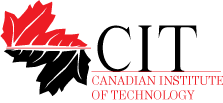Submitted manuscripts must not have been published previously, moreover submission to the journal will be deemed to imply that the manuscript will not be submitted elsewhere if accepted.
General Requirements
- All manuscript should be written in Englishor Italian Title and abstract should be written only in English.
- All manuscripts should be send as an attachment to the email This email address is being protected from spambots. You need JavaScript enabled to view it. in .doc or .docx format (such as Microsoft Word). We do not accept PDF submissions.
- Articles should be approximately 5,000-10,000 words in length and should not exceed 20 pages. While we understand some papers must be longer, if a paper (except for data and instructions) is longer than the aforementioned length it may be rejected without review. They should be written as continuous expository narrative in a chapter or article style—not as lists of points or a PowerPoint presentation.
- Please remember that the articles are to be published in a fully refereed academic journal. This means that the style and structure of your text should be relatively formal. For instance, you should not submit a verbatim transcript of your oral presentation, such as ‘Today I want to speak to you about …’.
- Article submissions must contain no more than 30% of textual material published in other places by the same author or authors, and these other places must be acknowledged and cited; in other words, the remaining 70% of the article must be unique and original to your current submission.
- Authors must ensure the accuracy of citations, quotations, diagrams, tables and maps.
- Articles must have a minimum of fifteen scholarly references.
- Spelling can vary according to national usage, but should be internally consistent.
- Articles should be thoroughly checked and proofread before submission, both by the author and a critical editorial friend. After you have submitted your article you are unable to make any changes to it during the refereeing process, although if accepted, you will have a chance to make minor revisions after refereeing and before the final submission of your article.
- Articles will be assessed by referees against nine criteria or fewer, if some criteria do not apply to a particular kind of article.
- An article should comprise of the title, authors, affiliation of authors, a sufficiently informative abstract of about 150-200 words, Keywords, and Introduction of the paper.
- Editorial decisions on acceptance or otherwise will be taken normally within 2-3 weeks of receipt of a paper, for papers submitted before the late deadline. Generally no review is performed during the month of August.
- The corresponding author will receive galley proofs, which should be corrected and returned within 48 hours of receipt.
- Authors must retain a copy of every contribution, as these will not be sent along with the proofs to be corrected by the authors.
- Responsibility of the contents rests upon the authors and not upon the publisher.
A possible example can be found at the following link: http://ojs.ecsdev.org/index.php/ejsd/article/view/71/65
Page and text Layout
Please use the following rule of text for your manuscript:
- Set your pages up so that you have 1 inch margins (2.54 cm) on the left, right, top, and bottom of each page.
- Title: 16 pts. Centered, .
- Keywords: 10 pts., Italic, Justified.
- Abstract: 10 pts., Justified.
- Section headings: 11 pts. Numbered, Bold, alignment left.
- Indent your section headings by 1/2 inch (1.27 cm)
- Text: 11 pts, single line, Justified, Garamond .Type only one space in between sentences.
- Tables and figures: Included in the text, centered and numbered, 10 pts., Justified.
- Do not use cross references for tables and figures.
- References: Use APA style for references.
- Indent the references in the bibliography by 1/2 inch (1.27 cm), exept the first line.
- Do not use page or section breaks in your word document.
References: All references given in the References section must correspond to citations in the text. Please double check this before submitting a manuscript. Use initials for first and middle names. Give the names of all the authors. For date of publication, only provide the year unless it is a newspaper article, in which case provide the complete date. List references alphabetically by first author.
Sequence of the Article: In summary, the mandatory sequence of material in the paper should be title, author names, author affiliations, abstract, Keywords, body of the paper, acknowledgements (if any), references, appendices (if any).
Plagiarism Policy
EJSD Journal is using iThenticate service of Crosscheck to generate similarity index reports. The Journal will judge any plagiarism policy on its own merits. If plagiarism is detected either by the editors, peer reviewers or editorial staff at any stage of the publication the author/s will be requested to rewrite the text or quote exactly and to cite the original source. If the plagiarism is extensive, that is, if at least 25% of the original submission is plagiarism - the article may be rejected.

This work is licensed under a Creative Commons Attribution-NonCommercial 4.0 Unported License.
Authors of articles published in the European Journal of Sustainable Development retain copyright on their articles. Authors are therefore free to disseminate and re-publish their articles, subject to any requirements of third-party copyright owners and subject to the original publication being fully cited. The ability to copy, download, forward or otherwise distribute any materials is always subject to any copyright notices displayed. Copyright notices must be displayed prominently and may not be obliterated, deleted or hidden, totally or partially.



